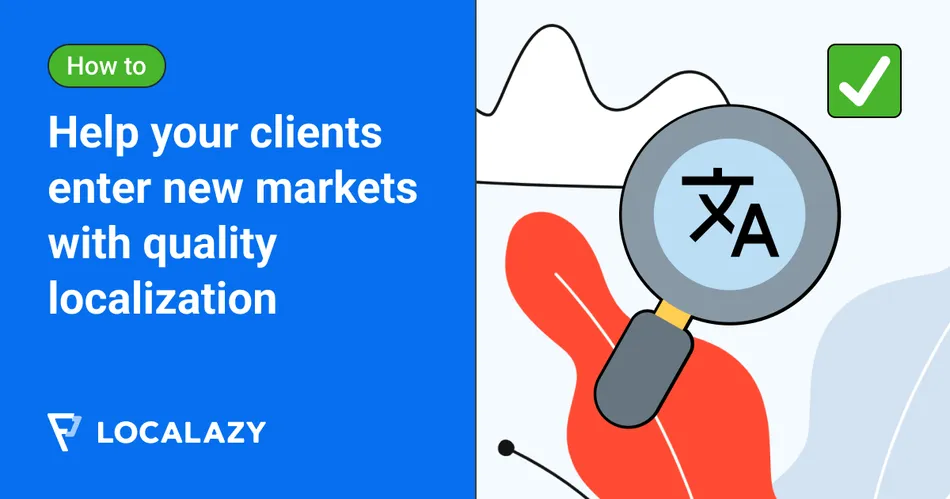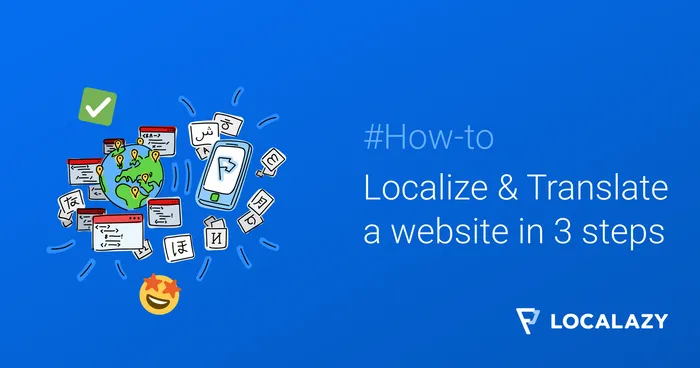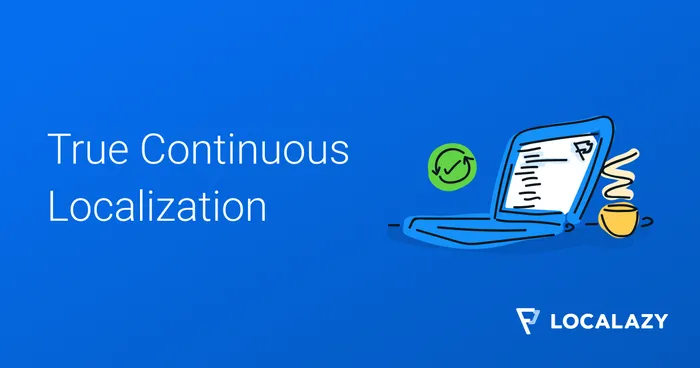If you're part of a digital agency, creative agency, or software house in industries like computer software and marketing, you're likely well aware of the significance of creating multilingual experiences for your clients. But the question remains: How do you ensure your clients enter new markets with quality localization?
If your clients service a multilingual customer base, quality localization is a must. Through this article, we'll discuss insights, strategies, and tips to achieve it. Hundreds of international brands have trusted us to help them go multilingual, and we’ve learned a thing or two about producing quality localizations.
✅ What to consider first 🔗
There are several factors in play when it comes to localization. From customs to shopping habits, you must pay close attention to every aspect of your customer’s background. 🕵️♀️ Here are four things to look for when entering a new market with your localization strategy:
Evaluate the market situation 🔗
Sounds obvious, but this step is often neglected. You should evaluate the new market needs and situation before considering an entry strategy. Perhaps the new market has different needs from previous ones, and you’ll need to reform your strategy. Or perhaps it is currently going through a cultural transition, and new standards aren’t set yet.
Navigate online cultures 🔗
Every market has its own shopping and purchasing culture for online services or products. To successfully enter a particular market, you’ll need to spot and analyze these online cultures and their impact on the niche you’re trying to break into.

Not keeping note of the prevalent online cultures is a recipe for disaster. 🧨 Plus, now it’s easier than ever for brands to become viral for not respecting online customs and trends in a particular market.
Embrace customer habits and customs 🔗
Once you have a grasp of the customer base cultures, the challenge is to adapt your client’s offering to those cultural changes. Your clients must be willing to adapt their products and marketing strategies to align with the customer culture of the new market. This means not just language localization but also content, visuals, and tone adjustments.
Locales & Adaptations 🔗
Before entering a new market, you need to identify the dialects, locales, and subtle differences in the language used within the market. Localization resources like the Localazy Hub can assist you during the research process.
On this extensive localization database, you'll find all the information you need about languages, world regions, currencies, time zones and other market variables you'll need to understand before taking your business to a new global location.
Thinking of all the potential users' locales that extend into the demographic that your client is expanding into will help you prepare an inclusive localization strategy. 👌
🎙️ Find inspiration in our Bridging the Gap podcast episode with Alex Kopp, Senior Solutions Engineer at Storyblok on driving growth through high-impact content.
😬 Common errors when entering new markets 🔗
Localization can be tricky and ineffective if you rush and underestimate the peculiarities of the language in the market you're entering. If you do, chances are you’ll end up with wrong or mismatched translations that don’t connect the brand with the intended user base. To avoid this, it is best to steer clear of the common pitfalls when entering a new market. Some of them include:
Neglecting market research 🔗
Superficial research of the target market can lead to embarrassing localization errors. A detail that you consider trivial can be a cornerstone of the target culture. Localization requires in-depth research, and its success is tied to the attention you pay to details.

Using only Machine Translation 🔗
While Machine Translation (MT) has evolved over the years, it still isn’t enough to help you localize your clients’ materials for a new market. Tools like Google Translate can lead to embarrassing mistakes, but they’re still useful for basic translations.
For sensitive translations like marketing materials and UX writing, it’s best to seek help from human translators. The ideal match is to combine them both.
Not adapting your brand voice to cultural norms 🔗
When entering new markets, you should examine the local cultures and check if your current brand voice suits their cultural norms. For instance, if you’re helping an 🇺🇸 American brand expand to a country like 🇯🇵 Japan, you should consider the cultural norms of the target culture.
If an American brand has a friendly and informal voice and depicts people having informal and provoking conversations in its ads, that could be seen as offensive by the Japanese.
Superficial research of the target market can lead to embarrassing localization errors. A detail that you consider trivial can be a cornerstone of the target culture. In addition, it is important to check if your current brand voice is suitable for the market's cultural norms.
Not performing any localization testing 🔗
When piecing together a localization strategy for your client, you’ll encounter many theories and cultural details that take time to process. However, as you might have learned from your experience, plans almost never turn out the way you expect them to.
Therefore, avoid overanalyzing just to end up with a localization strategy that doesn’t perform as expected. Perform small localization tests that will help you gauge your approach. It’s best to fail these small tests with a small demographic rather than with an entire strategy in an entirely new market. What can you test?
- ✂️ Functionality and design. Some design and functionality choices are not equally intuitive in all cultures. A small test of your localized product with a small pool of users can tell you if it’s worth following the chosen approach for the entire localization strategy.
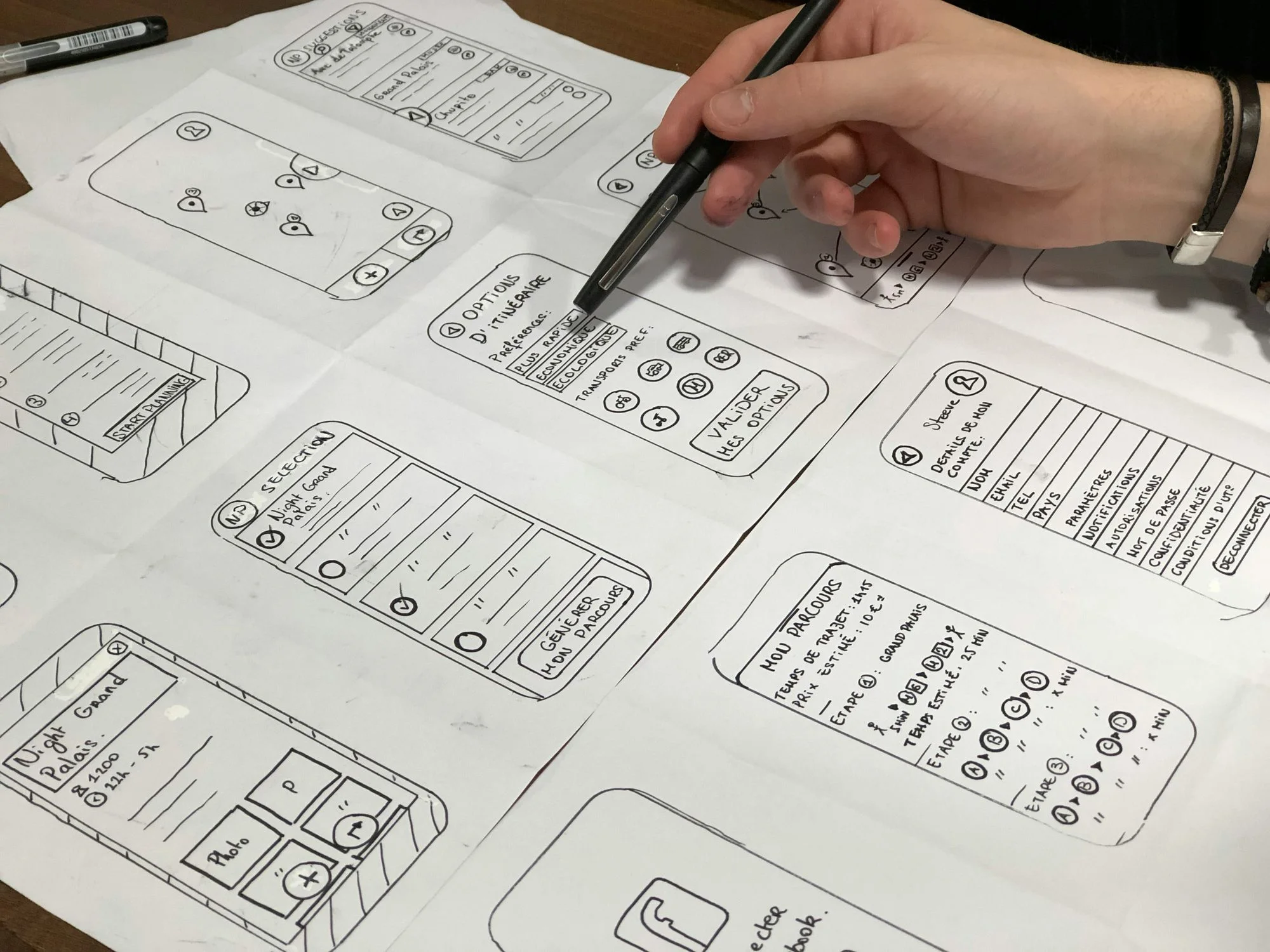
- 📚 The linguistic choices. Several linguistic elements, especially figurative language, have multiple translation versions. With a small test, you can understand if the chosen versions, word usage, and terminology match what users want.
- 💻 ⚖️ Device and legal compliances. What devices will the target market use mostly to access your client’s assets? What regional legal regulations do you need to comply with to avoid any risk? Test your localization approach with these two angles in mind to avoid extra work.
3 real-world examples of localization pitfalls 🔗
Localization requires close inspection of details. It’s not something you can brush off easily. Even worldwide brands have been subjected to localization pitfalls. Let’s have a look at some of them:
🍕 Dolce & Gabbana marketing blunder in China
Dolce & Gabbana once ran an ad campaign in China that was criticized as culturally insensitive. The ads and videos depicted a Chinese model attempting to eat Italian foods like pizza and cannoli in a way that appeared awkward. This resulted in social media backlash and a boycott of the brand in China.
🥱 HSBC Bank tells the world to "Do Nothing"
Sometimes, creative taglines are challenging to translate. So, it's best to worry less about sounding smart if you want to go global. When HSBC launched its "Assume Nothing" campaign globally in 2009, the sophisticated tagline posed translation challenges. In several non-English markets, it was mistakenly translated as "Do Nothing," contradicting the intended message. The translation blunder led to a fast replacement, which cost around $10m to the bank: "World's Private Bank."
🚘 Honda: model naming gone wrong
When Honda launched their Fitta model in Nordic countries in 2001, they didn't know they had used a name for the model that translated to a vulgar term locally (female genitals). Combined with ads boasting "small outside, large inside," the name caused major embarrassment. Honda swiftly rebranded the car as Jazz, but not fast enough to avoid the embarrassment.

As you can see, even global brands struggle with localization. Therefore, you should invest serious efforts into it before your client goes viral for the wrong thing.
💪Localization as your best entry strategy 🔗
You cannot expect to enter a new market successfully if you don't communicate the value of your brand in a language that resonates with the target audience. Whether you prioritize localization as a market entry strategy for your clients or not, you will run into it as a necessity down the road. Localization is a must to maximize the value of a product or service offered internationally.
Let’s look at some of the obvious benefits it brings:
Powerful personalized experiences 🔗
A localized brand is instantly more persuasive and interesting than one that operates in a foreign language in a new market. People crave personalized experiences, and localization guarantees a high level of personalization.
Enhanced brand perception 🔗
Brands spend millions to maintain a positive brand image. Localization enhances it while benefiting other areas like marketing and customer retention. Customers will have a positive sentiment towards a brand that has undergone a degree of localization. 🍔 For instance, think about a major food brand like McDonald’s.
Receiving an English menu in a French franchise isn’t impressive. Receiving a translated menu is normal. However, receiving a menu adapted to the local taste, with elements of French cuisine and using native terminology leads to a higher appreciation and perception of the brand.
Competitive advantage 🔗
Brands that go the extra mile and add quality localization to their market entry strategy win an obvious advantage over their competitors. ✌️ In comparison, imagine how unimpressive and low-effort other brands with no localization appear to the customer base.
Once the positive sentiment about your brand meshes into the customer base culture, it will be difficult for the competition to penetrate into that market without localizing. And even if they do, you’ll still have an advantage by being one of the first brands to incorporate localization into their expansion strategy.
Higher ranks in local SEO 🔗
Localization reduces the costs of creating new content for a new market. At the same time, when localizing digital assets, you’ll target local keywords that would be impossible to target via a simple translation strategy. When you translate and localize blog posts, webpages, and landing pages into a new language, that helps you rank higher in local SERPs. Localization turns foreign brands into household names.

🚡 5 tips to kick off your localization strategy 🔗
As you can realize now, localization is challenging. 🏋️ However, you can reach a satisfactory degree of localization if you put up a well-thought strategy and respect the main principles of localization. While we could write entire articles on this, we’ll keep it short to give you five tips to keep in mind when building your localization strategy:
1. Hire a professional localization team 🔗
This is a no-brainer but an essential part of a successful internationalization process. ✅ Handling a professional translation team is challenging and time-consuming. At Localazy, we handle you whole localization journey.
At the time of ordering professional translation services, you'll have two main options available:
- Leave it to us. You can find professional translators for Professional Translation and Human-Assisted Machine Translation (HAMT) services, as well as reviewers and proofreaders for Human Translation Validation and Professional Proofreading (our QA process following professional translation work). You just have to order the services, sit back and focus on what matters while we take care of the rest. Learn the types of services we offer in our ultimate guide to Localazy translation services.
- Source the team from outside. Some companies prefer to invest in training a strong in-house translation team, and may have their own project and localization managers. If that's your case, you can invite your linguists to log into our platform and assign project roles freely.
2. Hire local experts 🔗
You can never understand a foreign market's needs perfectly by only reading the literature on it and making assumptions. Only natives can provide a clearer understanding of the market situation and where your brand fits in it.
Therefore, it makes sense to hire local experts who can help you form a worthwhile localization strategy by identifying what locals value, expect, and dislike in a brand of your niche. In short, an expert can help you:
- Prove the current need for your service/product.
- Identify the most preferred competitors.
- Note popular shopping habits.
- Spot cultural differences, etc.
3. Establish basic translation rules 🔗
Before applying your translation strategy and distributing work to your localization team, you need to sit down and agree on some simple rules, such as style guides, formats, and glossaries. For instance, you have to decide on:
- 🗓️ Date formats
- 💱 Currency symbols
- 🕞 Time formats (12-hour or 24-hour time formats)
- 📏 Units of measurement (weights, temperatures, etc.)
- 🧮 Number formats (eg: US: 1,234.56, FR: 1 234,56, JPN: 1,234.56), etc.

4. Find suitable localization technologies 🔗
Assembling a suitable tech stack is a must to save time and resources and output quality localization. Two elemental tools are: TMS (Translation Management Systems), and CAT (Computer-Aided Translation).
A TMS works as a central hub where you can keep all of your translations, glossaries, and assets and communicate and collaborate with translators, proofreaders, and reviewers. 📥 TMS are large systems like Localazy, which facilitate the translation process and assist in producing better quality translations.
CAT tools are often integrated into TMSs, including features like TM (Translation Memory), MT (Machine Translation), QA (Quality Assurance) features, and glossaries to assist in the translation process. They’re a must for continuous localization, simplifying the localization of new updates.
5. Leverage Machine Translation (MT) strategically 🔗
Machine Translation programs have been around for a while since the Georgetown-IBM Experiment made the first step in translation technology. However, as stated above, it’s hard to produce quality localization by relying solely on Machine Translation. Should we render them useless, though? Quite the contrary. We can use them for cheap and fast translations and even produce drafts of quality localization projects. 🗒️
The key here is to use them for uncomplicated translations and always have human translators proofread them. At Localazy, we provide integrations with traditional translation engines such as Amazon Translate, Google Translate, Azure Translator, and DeepL. While these are the most common ones, you can enable other ones by contacting us.

👩💻 Implement Localazy into your market strategy 🔗
Whether you’re planning to localize your client’s assets using Machine Translations, or want to work with professional translators and reviewers, Localazy is the only TMS you’ll ever need.
How Localazy can simplify localization 🔗
When using Localazy, you are saving on resources. Not only do we offer the best localization experience, but we also charge you less for it. Here are some of the beneficial features of Localazy:
- 🤝 ShareTM - Translate your app for free with translated phrases from other Localazy users.
- ♻️ InTM - Reuse translations from your previous projects, saving on costs.
- 🔍 Pro-active reviews - Access the changelog to browse through all changes, anytime.
- 📚 Translation Glossary - Our powerful Glossary adds context for contributors, prevents unwanted translations, and guides towards precise translations.
- 📲 OTA Updates - Allows you to translate the app without having to resubmit a new version of it to the Play Store after every change.
Whether you are using outdated solutions, haven’t explored any localization options yet, or are using expensive localization software, our platform can solve your localization needs. You can try it for free here.
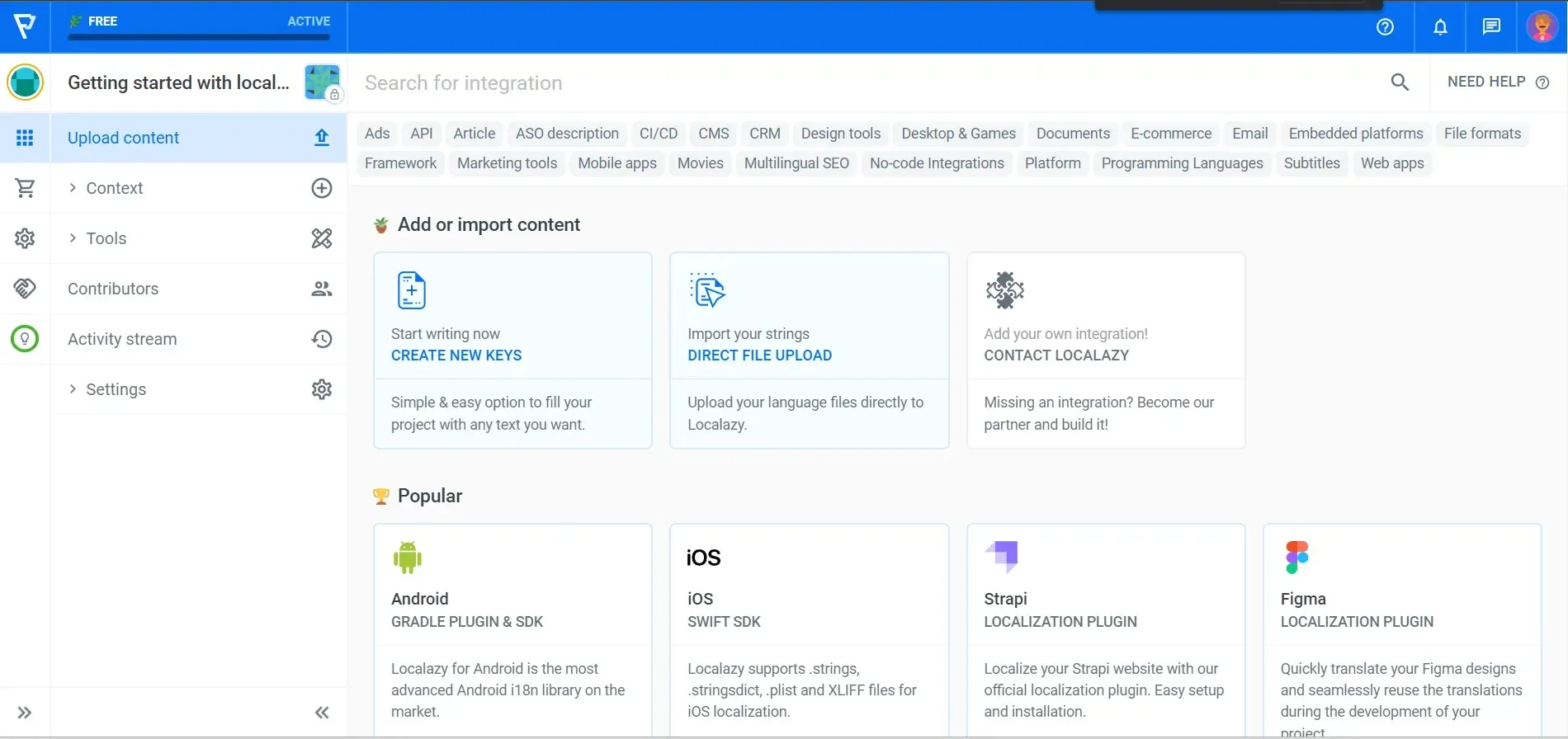
Localize content everywhere with +50 integrations 🔗
When speaking of software localization, integrations are a must to allow you to translate and localize content across platforms. Localazy supports integrations with popular platforms and frameworks, fitting ideally into your tech stack.
Localazy integrates seamlessly with over 50+ frameworks, file formats & popular tools, including CMSs like WordPress, Storyblok, Directus, and Strapi; developer collaboration tools like GitHub, Bitbucket, and GitLab; and design tools like Figma to extract text for translation. And if these are not enough for you, it supports integrations with Zapier to help connect it with 1000+ other apps.
Discover our library of integrations and start localizing right away! 🧩
📌 Conclusion 🔗
As you help your clients navigate their way into new markets, remember that quality localization has a high ROI. It opens doors to new opportunities, expands the customer base, and positions your clients as global players. Localazy has already helped numerous clients, including enterprise-grade organizations like banks, successfully enter new markets with localization, and you can be next.
We hope this article has been useful to kick-start your localization journey. Stay tuned, because we'll be offering region-specific insight next. For now, you can check out the Localazy Hub to research your target markets. 👩💻 Feel free to contact us if you have big plans for your i18n strategy!
